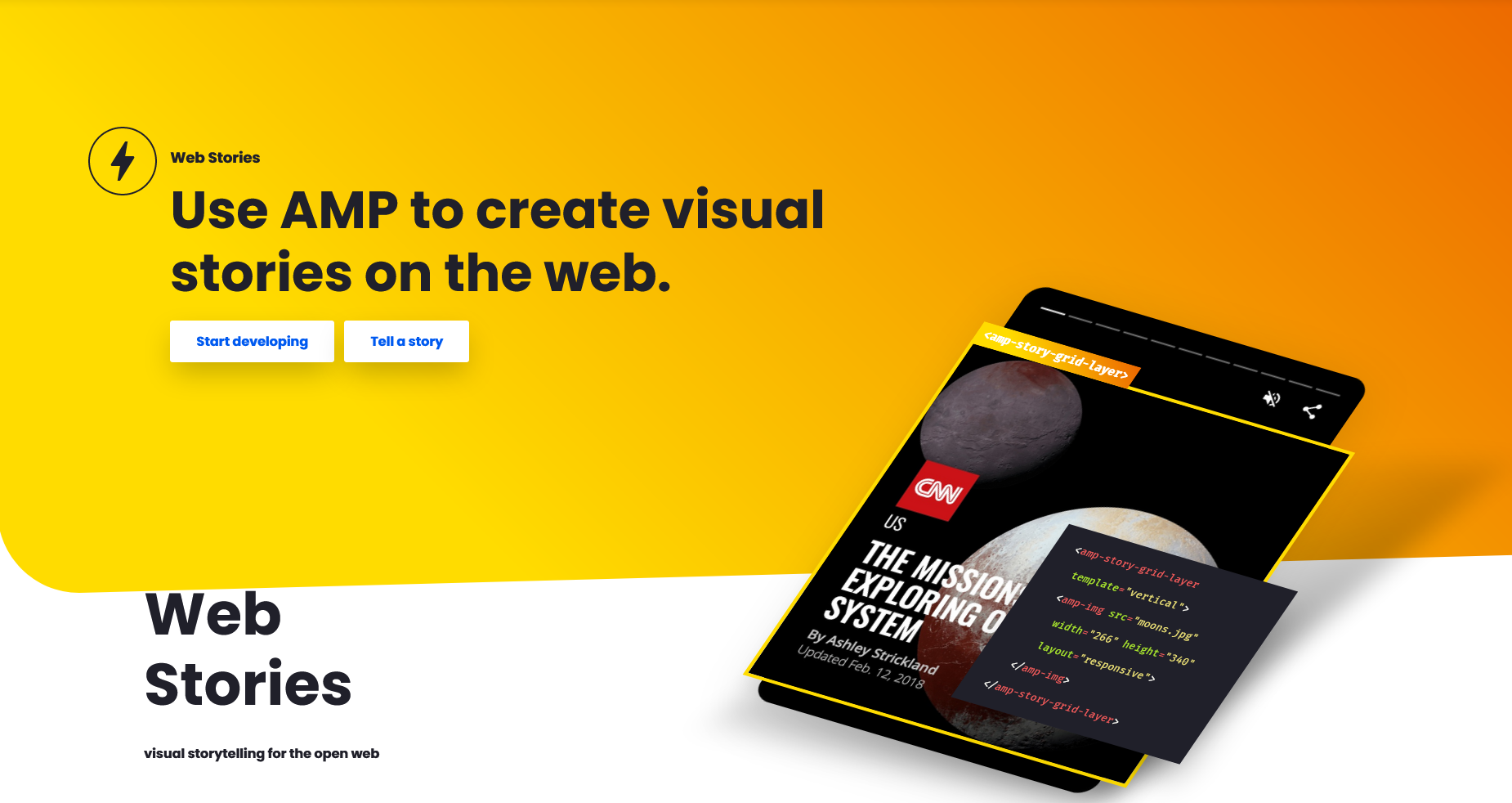SEO for Web Stories, optimization tips
“Web Stories are a new, exciting medium for storytelling on the web“. So begins an interesting article on the official blog of the AMP project, which tries to explain how to optimize from a SEO perspective these resources, that are conquering an increasingly important role both in the UK and USa but that, as we reported in a previous article, they still seem to be under-exploited elsewhere.
How to do SEO for Web Stories
Actually, according to blog.amp.dev experts (from which following images are taken) the optimization work starts from a seemingly simple consideration: for Web stories you have to do “do all the SEO things you would do for any other page on your website”, because the strategy that “helps rank your non-Story pages, it’ll probably help the Stories as well”.
Optimization tips for stories
Characteristics of Web Stories
The Web Stories format is quite simple, it is based on the same concept of similar functionalities typical of the the various social networks apps and can be applied to very broad and generic contents, “from how to apply lip gloss the right way to a travel guide through the Himalayas”.
However, it is important to point out that AMP stories are not only web pages: they have a URL on your web server, they are linkable via links and can in turn contain a link to other web pages.
SEO tactics for Web Stories
- Metadata
- Management of internal links
- URL Format
- Page attachments
- Video subtitles
- Video-only stories
Metadata
Web stories have a built-in mechanism to connect metadata to a story, with specific guidelines to comply with in order to have maximum compatibility with search engines and the detection features exploiting these elements.
In addition, we must include all titles, description, schema.org data, OGP (Open graph protocol), Twitter tab and other data that we normally insert in the classic web pages.
Linking to Stories
The use of internal links is very useful and is recommendable to link stories from the homepage or categories: “E.g. if your Story is about a travel destination and you have a page that lists all your travel articles, then also link the Stories on that category page. An additional special landing page like www.example.com/stories (which would then be linked from key pages like your homepage) might also make sense”.
The blog reminds us that “links – from within your site and to other websites – are a critical component of how the web works and optimizing for discoverability”, and this also applies to the stories that, as said, are still Web pages.
URL Format
It is not necessary to indicate in the URL of a story that we are using the Web stories format, because these resources should be integrated in a wider URL strategy. For instance, “if your “New York Travel” articles are using a format like “/new-york/travel/title-of-article.html” then consider using the exact same directory structure and URL format for your Stories”.
PAge attachments
We can insert attachments to provide further info in the “classic article form” next to the story and in this way offer extra details, deep dives or following trips to the contents presented inside the resource.
Image descriptions
Similarly to what we do (or should do) to optimize the regular images on the site, in the stories it is as well recommendable to enter the alt text in the images, by writing a meaningful text to optimize the accessibility and indexing of the contents.
Video subtitles
It can be useful to provide subtitles and/or captions for the videos embed inside the stories.
Video-only Stories
The article (signed by the italian Flavio Palandri Antonelli, Google Software Engineer) suggests to “take full advantage of semantic HTML to build up your story”, but also states that “some tools designed for the social media use case may instead export a story such that each slide is represented as a video file that bakes in all the text into the video”. Therefore, it is always good to “add the precise text displayed inside of the video as a title attribute on the amp-video element”, but only “only if you absolutely cannot use semantic markup in your Stories generation“.
Other optimization tips
In addition to these suggestions, there are other technical details to consider. In particular, even if the stories format is traditionally associated with mobile consumption, the Web stories also work on desktops with optional support for horizontal displays, and therefore our page can also appear among desktop search results without further work.
Also, while using the AMP framework, the Web stories should be self-canonical because the canonical-pairing is not supported and the association < link rel = “amphtml” > frequently used by AMP pages is not available for Stories.
Content stays key on Stories too
The SEO for Web stories is not too different from the SEO for any other web page, and therefore we must work to translate our skills towards this new opportunity, too. There are some specific best practices to put into practice, but the final advice remains the same: include high quality contents.
For the stories, as well, the old mantra “content is king” is still valide, giving tha fact that providing high quality contents useful and interesting for our users “is and will always be the most important SEO tactic, that can not be ignored and takes precedence over everything else”.




